Aspiring internet entrepreneurs often assume that making money with a blog is as simple as publishing a few posts on a free WordPress theme, tossing it onto free hosting, and waiting for the cash to roll in.
The truth is that unless you strike gold on day one, it takes far more than a patchwork site to build a profitable, recognizable, and sustainable business around your writing.
The good news: if you’ve got the patience to take feedback on your writing, and you can stick with it long enough to gain traction, a blog can bring in hundreds—sometimes thousands—of dollars per month. If it really takes off, the upside is much higher.
Competition is real, but there’s no ceiling on the number of useful ideas you can turn into a blog—at least within the laws of physics. If you discover new ones, let us know so we can all retire early.
Every Way to Make Money Blogging
Writing alone doesn’t make money.
It’s the system you build around your writing—positioning, audience, offers, and distribution—that determines whether your blog becomes a stud or a dud. Early on, your site is a fledgling that needs consistent care before it can fly.
Before growth comes a plan: choose a niche you can talk about every day, preferably one where you have real experience or unique access. Play to your strengths.
With your niche set, define your voice and the audience you want to attract. From there, map out how you’ll eventually monetize your traffic.
Use the ideas below to plan ahead.
Google AdSense
Google AdSense lets you earn money by displaying relevant ads on your blog. Advertisers bid to reach your readers, and Google matches ads to your content and visitors.
Pros: easy to set up, highly targeted ads, granular controls and blocking, Auto ads and optimization, strong reporting, can become a steady baseline of revenue
Cons: RPMs fluctuate by niche and seasonality, strict policies, potential layout/UX tradeoffs if overused, earnings limited without significant traffic
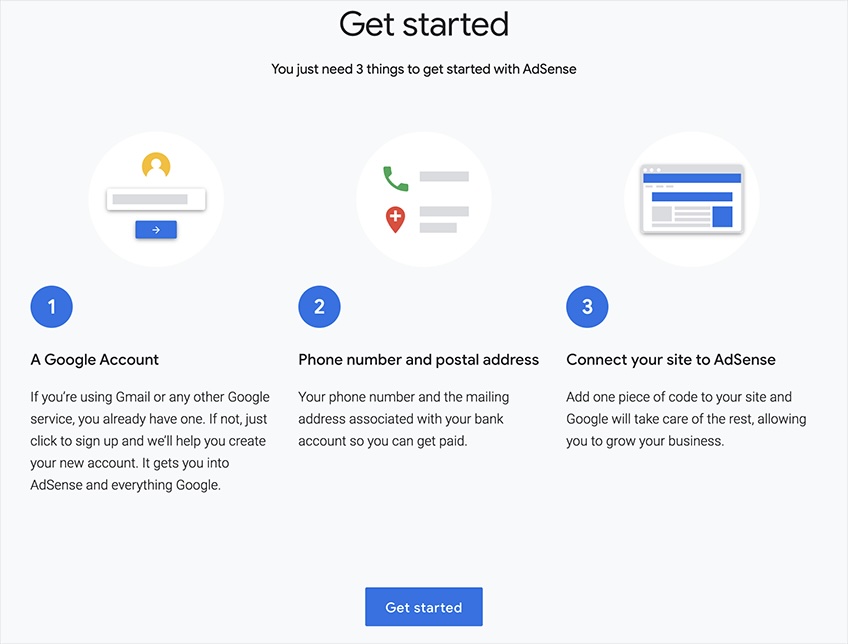
You control ad types, placement, and density so you can balance user experience with earnings. Start conservatively, monitor engagement, then test smarter layouts as traffic grows.
Selling digital products
Digital products are the classic “create once, sell repeatedly” model. Build a product that solves a painful problem, then keep it updated and relevant.
Pros: instant delivery, scalable, high margins, global reach, easy to update and improve over time
Cons: piracy risk, support and versioning, format compatibility, demand can fade without ongoing marketing
Validate before you build. Run short surveys or polls, interview readers, and analyze on-site search queries to find what people will actually pay for.
Popular digital products include:
- Online courses
- Resume templates
- Ebooks
- Digital comics
- Tutorials and guides
- Webinars
- Recorded workshops
- Automation templates
Selling physical products
Once your blog becomes a recognizable brand, you can extend it with physical products—merch, hand-crafted goods, or other paraphernalia aligned with your content. Physical products boost brand affinity and can drive new visitors back to your site.
Pros: tangible value, brand exposure, repeat purchases, loyalty-building
Cons: production and inventory risks, fulfillment and returns, shipping costs, margins vary by item and supplier
Popular physical products to sell on your site include:
- Branded T-shirts
- Coffee mugs
- Sweatshirts
- Enamel pins
- Tote bags
- Beanies
- Socks
- Fanny packs
- Caps
- Posters
- Stickers
- Phone cases
- Coasters
- Water bottles
You can manufacture directly or use print-on-demand services like Redbubble or Printify to handle production and shipping.
Paid speaking opportunities
Authority opens doors. If your blog becomes a go-to resource, conferences and organizations may invite you to speak. You don’t need to be Simon Sinek-level polished to deliver value—clarity beats theatrics.
Pros: great networking, strong fees at scale, credibility boost, travel opportunities
Cons: time-intensive to prepare, travel costs, many “exposure” slots pay little or nothing
Prepare thoroughly, rehearse, and build a talk worth sharing—like Tim Urban’s classic TED talk—then offer a compelling takeaway for attendees to act on.
Writing sponsored content
After you escape the sandbox, brands may pay for sponsored posts. These can be one-offs or longer series. You can also pitch companies directly with packages that include posts, newsletters, and social amplification.
Pros: new audience exposure, partnerships, creative collaboration, meaningful revenue potential
Cons: must be clearly disclosed, can alienate some readers if overdone, longer production cycles than ads
Negotiate terms that protect editorial integrity. Be transparent with readers and align with brands your audience actually cares about.
Don’t limit outreach to small brands. If you love Coke Zero, pitch The Coca-Cola Company. Bold pitches occasionally land.
Sponsored product reviews
Many companies pay for credible reviews and hands-on testing to build social proof.
Pros: early access to products, high reader interest, strong search demand in many niches
Cons: staying objective is hard, margins vary, highly competitive, time-consuming to test thoroughly
Set expectations up front: you’ll disclose sponsorships, and you won’t sugarcoat flaws. Credibility is the asset that pays forever.
Tell partners you won’t compromise on accuracy regarding features, materials, use cases, and limitations.
Offering services
A successful blog is also a lead engine. Package your expertise and charge premium rates. This can stabilize cash flow while other revenue streams ramp up.
Pros: high-ticket projects, creative variety, global reach, can evolve into an agency or productized service
Cons: not passive, scope creep risks, qualification and sales take time, heavy competition in broad categories
Common offers that convert well include:
- Guest posting services
- Copywriting services
- Web design services
- Graphic design services
- Social media consultancy
- Content management services
- Content automation services
- SEO services
Tailor services to your niche. A beauty blogger might offer virtual consults or digital makeover sessions; a finance blogger could offer one-on-one budgeting workshops.
Affiliate marketing
Affiliate marketing is the most common path: you recommend products using special links that credit sales back to your site.
Pros: low startup cost, huge product selection, location-independent, compounding effect as content ranks
Cons: commissions vary and can be lowered by programs, competition is fierce, earnings take time, some products underperform
When readers purchase through your link, you earn a commission. Typical commissions range from low single digits to 30%+ depending on the merchant and category.
Join programs, follow their rules, and avoid misrepresentation. Violations get accounts closed.
For example, the Amazon Associates policy requires new applicants to generate at least three qualifying sales within 180 days to remain eligible.
Amazon isn’t the only game in town. Other popular affiliate networks include:
- CJ: Formerly Commission Junction. Brands include Verizon, Zappos, IHG, and many others—excellent for big-name merchants and robust reporting.
- Rakuten Advertising: Formerly Rakuten Marketing. Access to hundreds of established brands with strong program controls.
- ShareASale: Broad marketplace with thousands of programs, straightforward onboarding, deep-linking tools, and real-time reporting for beginners and pros alike.

Starting an Affiliate Marketing Blog From Scratch
Launching an affiliate-driven blog requires a handful of important steps. The same steps also support other monetization models.
Below, we’ll focus on affiliate marketing to keep things practical.
Choosing a niche
Pick a focused slice of a larger market—tabletop gamers, pet owners, remote workers, travel bloggers, and so on. These audiences share needs and search habits you can serve repeatedly.
Why go narrow instead of trying to capture an entire industry? Focus lets you deploy limited resources where they matter, double down on what works, and build authority faster.
It’s easier to become the best answer for a specific reader than a passable answer for everyone.
Before you commit, consider:
- Start with your passion or experience: Choose a topic you’re excited to write about—or one where you have hard-won expertise.
- Analyze competitors: Study keywords, content angles, and offers the top sites use. Look for gaps you can fill.
- Estimate demand: Use Google Trends to gauge steady interest, not just seasonal spikes.
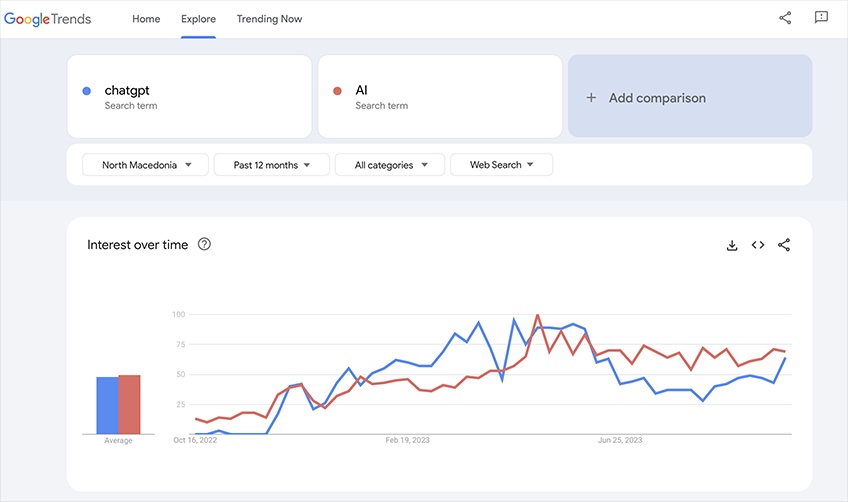
Building a website
With a niche chosen, you need a home for your content and affiliate operations.
Most people start with a builder such as GoDaddy, Bluehost, or Wix. Builders are fast to launch and include hosting and security basics.
You can code from scratch with HTML, CSS, and PHP, but that’s rarely the fastest path for an individual blogger whose goal is to publish and rank consistently.
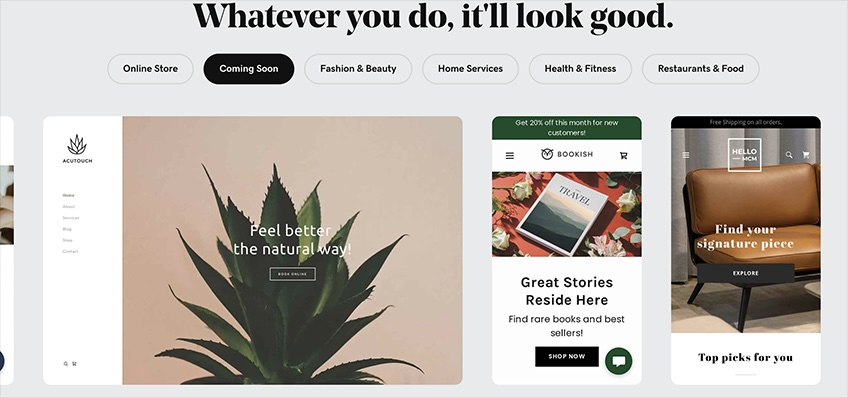
Builders also bundle stability, support, and a library of templates and integrations—useful when you’re publishing often and testing offers.
Hosting your website
Your site needs reliable hosting so visitors can reach it quickly, 24/7. Unless you want to run your own servers, choose a managed provider.
Hosts offer plan tiers, security updates, backups, and performance features. Some also include website-building tools—often as separate services that integrate well—like Duda or DreamHost.
Pick a simple, memorable domain aligned with your niche. Short, pronounceable, and brandable wins—think “Elektrobyte” for electronics or “Wagclub” for pet care.
When comparing hosts, evaluate:
- Security: Protect logins, data, and affiliate links; ensure HTTPS and active monitoring.
- Reliability: High uptime and consistent performance under load.
- Scalability: Easy to upgrade (or downgrade) as traffic changes.
Avoid unnecessary host hopping—migrations introduce risk and downtime.
Solid choices include:
For deeper comparisons, see our guide on the best web hosting providers.
Choosing a content management system (CMS)
Picking a CMS is both fun and consequential. Your CMS shapes how fast you can publish and how easily you can optimize.
A CMS is the engine that stores your content and renders it cleanly. With the right CMS, you get a friendly UI without writing code.
Modern CMSs are either traditional (frontend + backend bundled) or headless (backend content store with a separate frontend framework).
Could you run a site without a CMS? Sure—but it slows you down.
Evaluate CMS options on three pillars:
- User-friendliness: Non-technical authors should publish and edit quickly.
- SEO: Clean URL structures, metadata controls, image optimization, and plugin/extension support.
- Content organization: Categories, tags, custom fields, and flexible navigation so readers (and search engines) can find things easily.
Also watch out for:
- Hidden costs: “Free” tiers that jump in price with traffic or features.
- Needless complexity: If the UI fights you, pick another tool.
- Weak support: You’ll need docs, tutorials, and an active community when something breaks.
Good CMS options for affiliate bloggers include:
- WordPress.org—The most popular open-source CMS. Vast theme/plugin ecosystem and total control. Because it’s popular, keep plugins updated and follow security best practices.
- Joomla—Flexible and powerful, with strong access controls and extension options.
- Drupal—Enterprise-grade and highly customizable for complex sites.
- Wix—All-in-one builder with solid SEO features and minimal plugin headaches.
- Squarespace—Polished templates, built-in analytics, and quick setup (paid, with a free trial).
- Shopify—Excellent for hybrid ecommerce + content sites with an extensive app ecosystem.
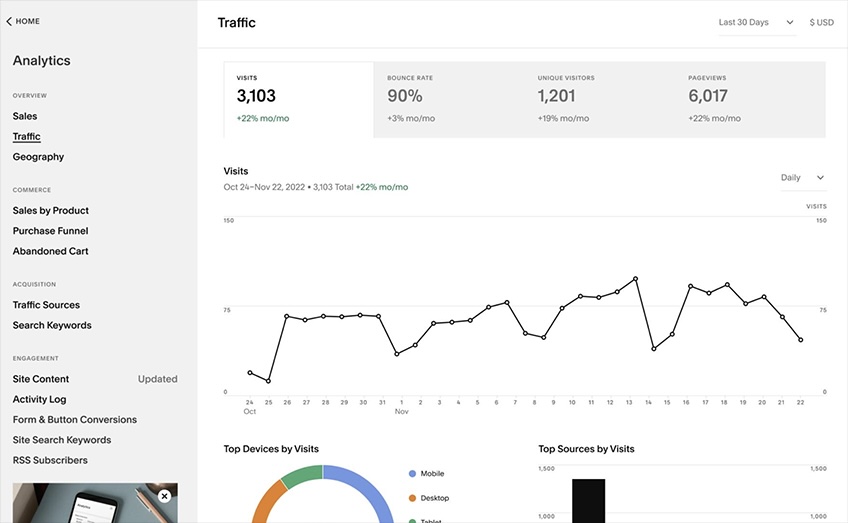
Optimizing your website for SEO
SEO isn’t dead; it just keeps evolving.
Since 2024, Google has folded “helpful content” signals into its core ranking systems and continued refining them through 2025. Translation: people-first content written (or reviewed) by folks with real-world experience tends to outrank thin, purely commercial pieces.
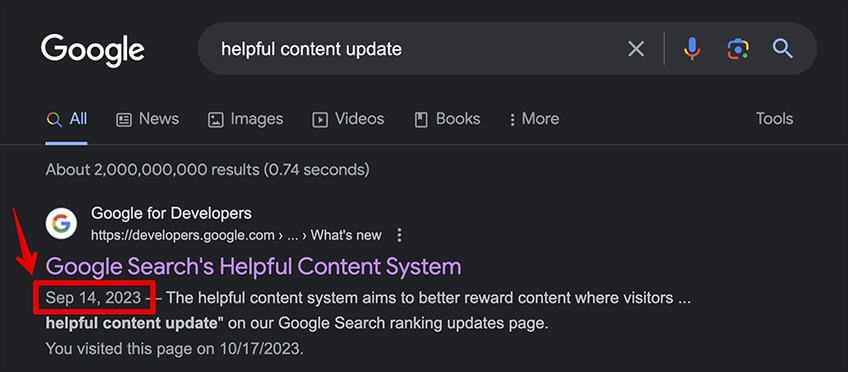
Think of SEO as the set of practices that earn you the right visitors at the right time without buying every click. Strong rankings bring qualified traffic that converts.
Three practical moves:
- Do relevant keyword research: Use Semrush or Ahrefs to uncover queries with intent. Map one primary topic per URL. Use keywords naturally in titles, H2s/H3s, and meta descriptions.
- Publish experience-rich content: Show your work—photos you took, tests you ran, data you gathered, receipts, and results. Opinion + evidence beats generic summaries.
- Optimize speed and UX: Fast load times, clean navigation, readable typography, and mobile-first layouts reduce bounce and improve conversions.
Building from scratch isn’t easy. But affiliate is just one of several ways to earn with a blog.
How To Get Passive Income by Blogging
“Passive” is earned, not free. You’ll need an audience, consistent high-value publishing, and a little luck.
Many successful blogs started as passion projects. They became profitable through persistence and by adapting to what readers wanted.
Treat your blog like a business from day one and long after it takes off.
To get there, give visitors reasons to:
- Discover your blog for the first time
- Explore additional articles
- Return regularly
- Share your content
- Remember a positive experience
Content alone doesn’t monetize itself. You need qualified traffic—people ready to buy, subscribe, or engage with your recommendations.
The top ways to generate passive income from a blog
Not all monetization plays are equally passive. Some scale with minimal upkeep; others require ongoing effort.
And none of them will save a site with slow hosting or a confusing UI.
Among the most reliable “passive-leaning” approaches:
- Affiliate marketing: Quick to start, affordable, and maintainable once content ranks. Expect competition—win with depth, testing, and better recommendations.
- Selling online courses and ebooks: Evergreen products can pay for years with periodic updates and fresh promotion.
- Running digital ads: Ad networks can become strong baseline revenue at scale. Balance ad density with reader experience and stay compliant with policies.
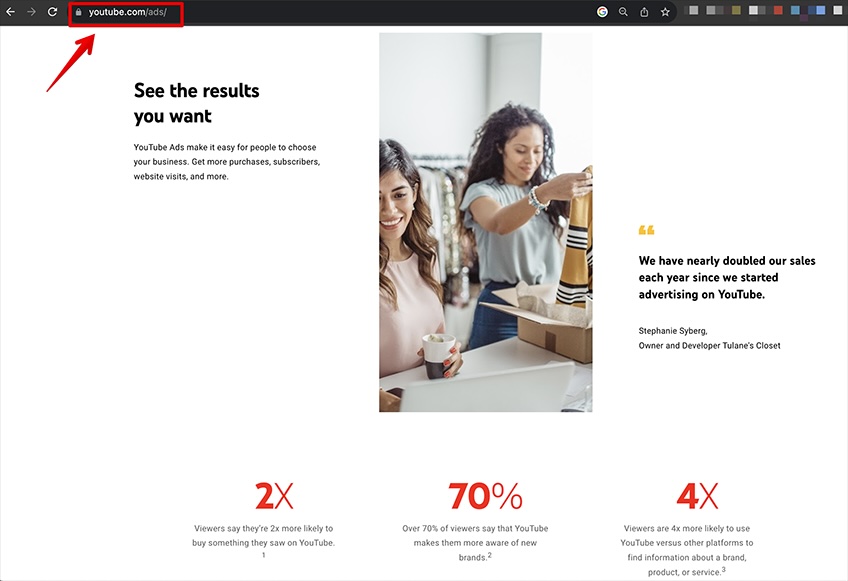
Systems reduce workload: editorial calendars, internal linking processes, email automations, evergreen updates, and scheduled promo cycles keep revenue flowing with fewer hands-on hours.
3 Actionable Tips for Making Money Blogging
Ideas are cheap; execution pays. If revenue is lagging, start here.
If your blog isn’t making what it should, use the tactics below to turn it around.
1. Select a topic with revenue potential
Balance three forces:
- Present and future popularity
- Competition intensity
- Monetization potential
Topic popularity
Blogs need consistent readers. You could dominate an ultra-niche like tracking the shoe sizes of protagonists in 20th-century Bildungsroman novels (please don’t), but if no one cares, the revenue ceiling is zero.
Choose topics with enduring interest—skip fleeting hype cycles and defunct fads.
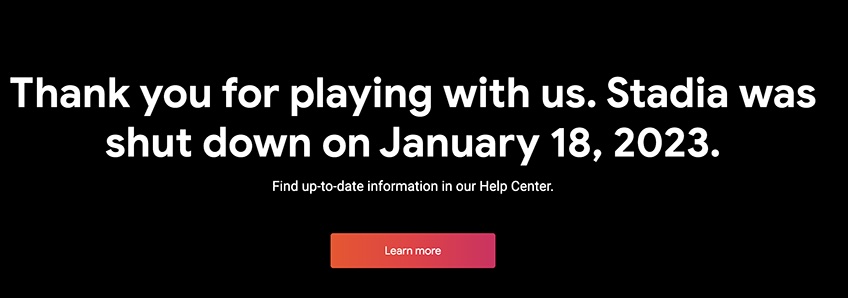
Drill down from broad topics to specific, valuable angles. Instead of “food,” try:
- Six 5-course dinner ideas for established restaurants
- Best gluten-free recipes for beginners
- Five ways to prepare organic egg whites
Use Google Trends, Semrush, and Ahrefs to validate interest and discover related searches.
Topic competition
Another path is “popular but underserved.” Look for queries with weak results: outdated posts, thin content, or missing steps. Publish something better and you can outrank quickly.
Examples:
- Hydroponic gardening tips: Urban living and indoor growing are rising—huge how-to and gear opportunities.
- Eco-friendly men’s fashion: Sustainable apparel is growing; curate and test brands with transparent sourcing.
- Genre-specific or audience-specific gaming advice: Hardware for left-handed gamers, guides for survival-horror players, and similar “narrow but passionate” segments.
Still stuck? Tools like Ubersuggest or Moz’s free Keyword Explorer can spark ideas.
Monetization potential
Once you find demand with manageable competition, target programs with healthy EPCs/commissions (Google AdSense, Amazon Associates, ShareASale, CJ, Rakuten). High-value niches are competitive; mid-value topics with clear intent often yield better ROI for new sites.
Two dependable examples:
- Gaming peripherals: Readers want hands-on, measurable comparisons (latency, battery life, switches, weight). Great affiliate potential.
- Digital nomad tips: Gear reviews, coworking guides, and destination checklists can monetize via affiliates, courses, and sponsorships.
As you scale, consider platforms like Demandbase One, StackAdapt, and Zeta Marketing Platform to enhance audience targeting and lift campaign ROI.
2. Publish weekly (at the very least)
Consistency wins. Publish at least one original article per week; increase cadence as you build systems and capacity.
Want more traffic? More high-quality posts mean more chances to rank. Want more affiliate revenue? Prioritize product reviews, comparisons, and “best of” roundups that match purchase intent.
Cover complex topics (like electrical engineering or architecture) with well-researched, longer pieces—even if you publish fewer of them.
If you’re a solo creator, set a realistic cadence, then stick to it. Teams can push faster—play your game, not someone else’s.
3. Discover your target audience
Traffic quality matters more than traffic volume. Know exactly who you’re writing for and why they’re searching.
Profile your readers by demographics and psychographics: age, role, income, goals, frustrations, and the outcomes they’re trying to achieve.
Understand their online habits:
- When they’re most active online
- Where they spend time (forums, YouTube, Reddit, newsletters)
- Which social platforms they actually use
- How long they spend browsing and when
List their biggest challenges and create content that solves them step by step. The more directly you help, the faster trust—and revenue—follows.
Conclusion
Profitable blogs are built on research, motivation, and grit. You can’t control luck, but you can stack the deck with a solid niche, consistent publishing, and a clear monetization plan.
For more on blogging, visit our main hub and our guide on how to start a blog in 11 simple steps.
